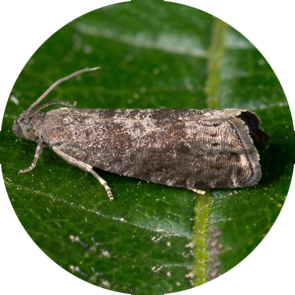


| Latin Name | Grapholita funebrana |
| Common Name | Plum fruit moth |
| Biology | Adult moths are active at night and lay eggs on the undersides of plum tree leaves or on fruits. The larvae bore into plum fruits, forming tunnels within the fruits; the infested fruits either drop prematurely or turn red early. They produce 2-3 generations per year, overwintering as mature larvae by spinning cocoons in the soil. |
| Damage | This pest primarily damages plum trees but can also harm apricot and cherry trees. |
| Distribution Regions | Europe |
| Monitoring | Pheromone lures mimic natural sex pheromones to attract male insects into specialized traps for population monitoring and suppression. As a core IPM component, monitoring enables early risk detection and targeted control. Mass trapping reduces mating opportunities to curb offspring populations. Protocols: ●Use only with matched traps. ●15-45 traps/hectare,replace/replenish every 4-6 weeks. ●Wear gloves or wash hands with detergent when switching lure types. ●Refer to trap-specific hanging instructions. |
| Recommended Traps | Delta Trap, Wing Trap |

ご連絡先情報をご提供ください。精密にマッチしたフェロモンソリューションをご提供します。当社の既存ポートフォリオに最適なソリューションが見つからない場合、合成化学チームが分子構造設計から量産まで一貫してカスタム開発を実施いたします。